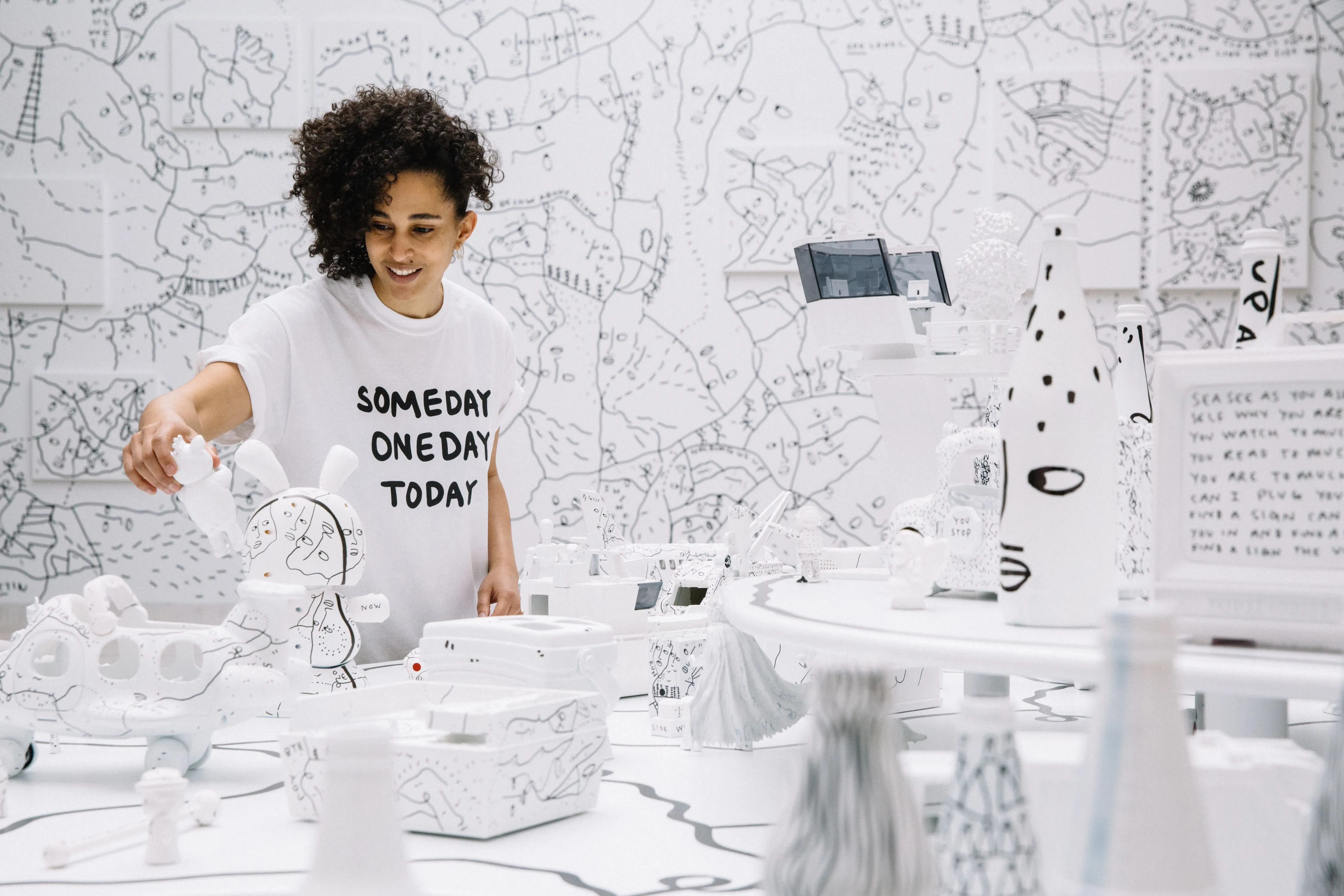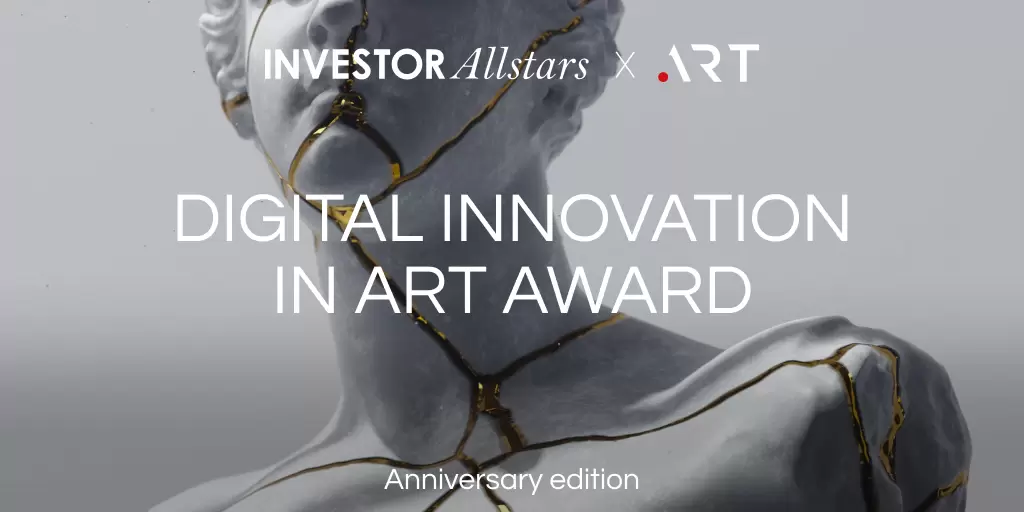Here's How to Write an Artist Statement
An artist statement is the cornerstone of a creative digital presence. Check out these tips on tackling the tricky task of putting one together.


As an artist, your preferred means of communicating are probably highly visual. But, since marketing yourself online is crucial to your commercial success, you need to make sure you have an engaging artist statement. A good artist statement clearly communicates your passions and serves as a concise introduction for your potential clients, art dealers, and curators. It’s also vital to have one if you want to apply for grants, jobs, and fellowships. Since your artist statement will be read by people from all over the world, this seemingly small piece of text will play a huge role in promoting your work and helping to explain why and how you make your art.
Your statement can/should cover the following:
- why you do what you do;
- what your preferred medium is;
- the philosophy behind your art and the process of creating it;
- what meaning you ascribe to your work.
Here are our top tips on how to craft that perfect artist statement.
Top tips on writing an artist statement
- Make it clear, concise, and short – no longer than one page.
- Don’t be pretentious.
- Refer to yourself in the first person and try to capture your own intonation if you want your statement to sound authentic and personal. Use the third person if you want to adopt a more formal tone.
- Be honest with your audience, speak to people as if they were your friends.
- Do not praise your own work, let your audience be the judge. Instead of referring to your work as ‘meaningful and beautiful’, tell your audience what it is actually about.
- Think of your audience. Who are they? What’s the best way to get your ideas across to them? Remember that you’ll be communicating not only with art professionals, but with a broad range of social groups that includes art lovers, museum-goers, students, stay at home mothers and potential buyers.
- Avoid using “International Art English” (IAE). In 2012, Alix Rule and David Levine wrote about these ‘curious lexical, grammatical, and stylistic features’ that are all too common in the art world. It comes across as pompous and overblown.
‘IAE has a distinctive lexicon: aporia, radically, space, proposition, biopolitical, tension, transversal, autonomy. An artist’s work inevitably interrogates, questions, encodes, transforms, subverts, imbricates, displaces—though often it doesn’t do these things so much as it serves to, functions to, or seems to (or might seem to) do these things. IAE rebukes English for its lack of nouns: Visual becomes visuality, global becomes globality, potential becomes potentiality, experience becomes … experiencability’.
8. Don’t quote Baudrillard! Postmodern philosophy is no longer in vogue.

by Shantell Martin, shantellmartin.art
Examples of great artist statements
We have chosen some good examples of artistic statements by our beloved adopters for you.
Shantell Martin (shantellmartin.art)
Basically I put the pen down and then just go with it. The pen knows where it’s going, and I’ve gotten very good at following it. So usually it starts with a very fast movement. And then I’ll step back and fill in the gaps. There’s a soft line and then I’ll do a nose … You need the eyes and the mouth. So it’s like a language unfolding. Stickmen are great because we can put them to work. They’re always pushing and pulling things.
Noah Scalin (foregroundbackground.art)
Noah Scalin’s work explores the theme of transience – specifically the temporary nature of our individual lives and tenuous nature of human existence on the planet. Rooted in the medieval concept of memento mori, a reflection on mortality meant to spur a greater reverence for life and reevaluation of priorities, Scalin’s work asks us to take notice of quotidian moments.
By using everyday items, including mass produced consumer goods, in his photographs, installations, and sculptures, Scalin asks the viewer to recontextualize the ‘things’ in their lives that are normally taken for granted, overlooked or discarded. His work narrates the potential long-term impact of humans and their creations, giving the audience an opportunity to shift their ‘thing-ethos’ from linear (cradle-to-grave), to cyclical (cradle-to-cradle).
Inspired by the work of 16th century painter Giuseppe Arcimboldo, Scalin’s work creates a visual vibration – an oscillation between form and symbol – as the viewer shifts between seeing the subject represented and the objects used to create it».
The Taoist concept of balance – the idea that dark is required to understand light; that destruction is what makes creation valuable – is an ever-present theme in Scalin’s work. In the same spirit as the sand mandalas of Tibetan Buddhism, much of Scalin’s work is intentionally temporary or ephemeral…
Paulette Insall (pauletteinsall.art)
My paintings are created through intuitive responses while engaged with the work. The process is completely organic and spontaneous. What emerges on the canvas is an internal language that is highly emotional and personal, yet at the same time universal. It speaks of places unseen, but at the same time comforting and familiar…like memories of a place we feel we have been before, but can’t quite recall all the details of the experience.
My inspiration comes from both my life experiences and the colors and forms found in nature. Living in the Pacific Northwest just outside of Portland, I am surrounded by a never ending wonderland of lush green forests and a bounty of colorful flora. Using color as language, my work is alive with emotion through the movement of the brushwork and the luscious layered colors. Much like memories, each painting is filled with layer upon layer of paint, building a rich history into each piece.
Though largely self taught over my career, I have studied with Krista Harris, Audrey Phillips, and Charlotte Foust. I am influenced by the work of Joan Mitchell, Cy Twombly, Willem de Kooning, Monet, and Van Gogh.
How .ART Domains Are Taking Artists Online Read More How to register a business email on .ART Read More Portfolio on .ART: How to showcase your creative work in 4 simple steps Read MoreSabrina Beretta (sabrinaberetta.art)
Over the course of my existence, creation has become an obviousness, and even a way of being, which I have called “ART & BE”. But why Art & Be?
This is the anagram of my surname BERETTA, and literally means “Art and Being”. It’s my philosophy of life: the art of being and being art.
My pictorial style has been developed with particular emphasis on symmetry, contrast, color intensity, and especially opposition. A line is often suggested to separate two states: a figurative side that seems real, and a more abstract and geometric side, revealing multiple facets.
This is how I represent themes that are important to me, such as (de)construction, paradox, metamorphosis, or the butterfly effect. The idea that a small incident can have great consequences, and that with a single flapping of the wing, everything can explode, gives me infinite inspiration.

Sabrina Beretta
In summary
Artists statements might not be easy to write, but they’re absolutely worth your time. Not only do they help your audience gain a deeper understanding of your art, but they also serve as a gateway for scoring exhibitions and enticing buyers. People deserve to know what it is about your art that makes it so special – so get writing!






